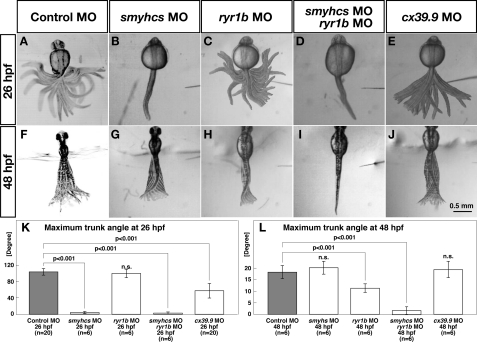FIGURE 5.
cx39.9 mutants have defects in slow muscle contraction. A–J, superimposed images of the trunk and tail movement during touch-evoked coiling and burst swimming. Control (A) and ryr1b (C) morphants exhibited normal coiling at 26 hpf. smyhcs morphants (B) and smyhcs-ryr1b double morphants (D) did not move in response to touch at 26 hpf. cx39.9 morphants (E) displayed weak coiling at 26 hpf. Control (F), smyhcs (G), and cx39.9 (J) morphants showed normal burst swimming at 48 hpf. The burst swimming was compromised in ryr1b morphants (H), and smyhcs-ryr1b double morphants (I) did not respond. K–L, Histograms showing that the amplitude of coiling was decreased in smyhcs, smyhcs/ryr1b, and cx39.9 morphants but not in ryr1b morphants (K) and that burst swimming amplitude was decreased in ryr1b and smyhcs/ryr1b morphants but not in either smyhcs or cx39.9 morphants (L).

